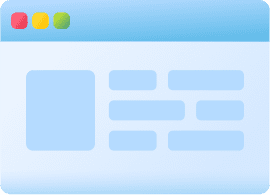+918042781554

This is your website preview.
Currently it only shows your basic business info. Start adding relevant business details such as description, images and products or services to gain your customers attention by using Boost 360 android app / iOS App / web portal.
Heart failure occurs when the heart muscle doesn'...

Heart failure occurs when the heart muscle doesn't pump blood as well as it should. When this happens, blood often backs up and fluid can build up in the lungs, causing shortness of breath. Certain heart conditions, such as narrowed arteries in the heart (coronary artery disease) or high blood pressure, gradually leave the heart too weak or stiff to fill and pump blood properly. Heart failure can be ongoing (chronic), or it may start suddenly (acute). Heart failure signs and symptoms may include: • Shortness of breath with activity or when lying down • Fatigue and weakness • Swelling in the legs, ankles and feet • Rapid or irregular heartbeat • Reduced ability to exercise • Persistent cough or wheezing with white or pink blood-tinged mucus • Swelling of the belly area • Very rapid weight gain from fluid buildup • Nausea and lack of appetite • Difficulty concentrating or decreased alertness • Chest pain if heart failure is caused by a heart attack If you have a diagnosis of heart failure and if any of the symptoms suddenly become worse or you develop a new sign or symptom, it may mean that existing heart failure is getting worse or not responding to treatment. This may also be the case if you gain 5 pounds (2.3 kilograms) or more within a few days. Contact your doctor promptly. Heart failure is a chronic disease needing lifelong management. However, with treatment, signs and symptoms of heart failure can improve, and the heart sometimes becomes stronger. Heart failure can sometimes be corrected by treating the underlying cause. For example, repairing a heart valve or controlling a fast heart rhythm may reverse heart failure. But for most people, treatment of heart failure involves a balance of the right medications and, sometimes, use of devices that help the heart beat and contract properly. • Implantable cardioverter-defibrillators (ICDs). An ICD is used to prevent complications of heart failure. It isn't a treatment for heart failure itself. An ICD is a device similar to a pacemaker. It's implanted under the skin in your chest with wires leading through your veins and into your heart. The ICD monitors the heart rhythm. If the heart starts beating at a dangerous rhythm, or if your heart stops, the ICD tries to pace your heart or shock it back into normal rhythm. An ICD can also work as a pacemaker and speed your heart up if it is going too slow. • Cardiac resynchronization therapy (CRT). Also called biventricular pacing, CRT is a treatment for heart failure in people whose lower heart chambers (ventricles) aren't pumping in sync with each other. A device called a biventricular pacemaker sends electrical signals to the ventricles. The signals trigger your ventricles to contract in a more coordinated way, which improves the pumping of blood out of your heart. CRT may be used with an ICD, known as CRT-D.

